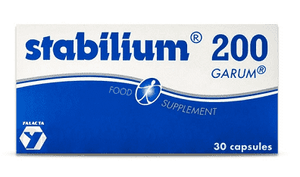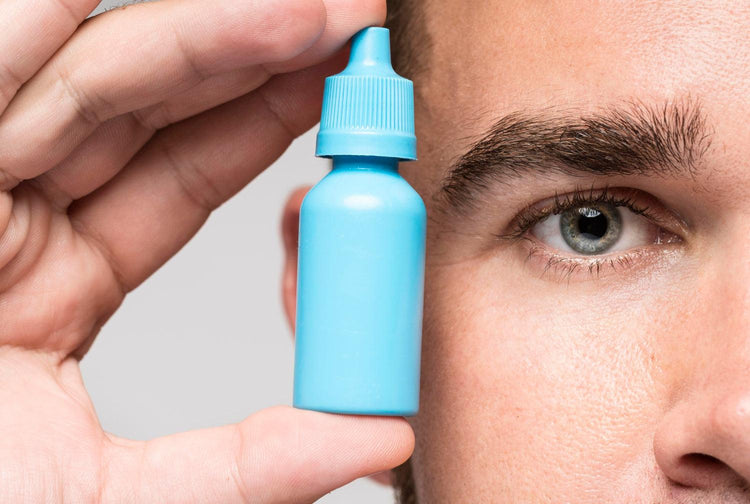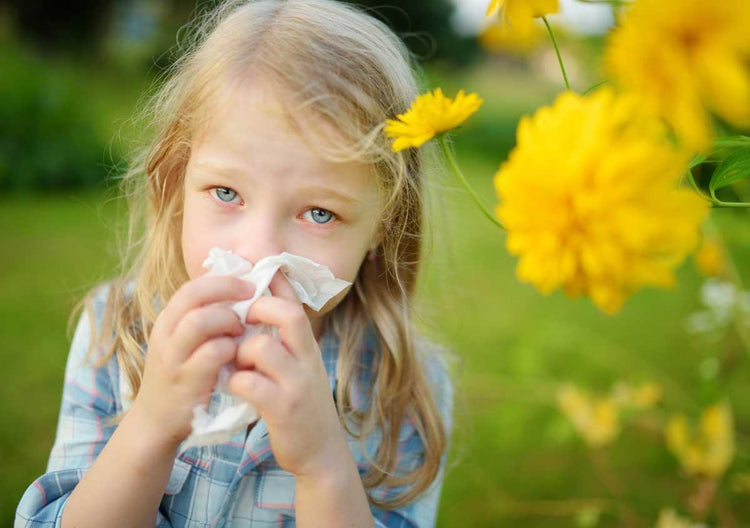Tomato Allergy: Causes, Symptoms, and Management


Related products
Understanding Tomato Allergies
Tomato allergy is an adverse immune system reaction to proteins found in tomatoes. It is relatively rare compared to other food allergies, but it can cause various symptoms ranging from mild to severe, including life-threatening anaphylaxis in some cases.
Prevalence and significance
Although the prevalence of tomato allergy is not as high as other food allergies like nuts or dairy, it is still a concern for those affected. According to Dr. Scott Sicherer, a leading expert in food allergies, about 0.5% to 1.5% of the population may have a tomato allergy. As tomatoes are a common ingredient in many dishes, it is essential to understand and manage this allergy to ensure a safe and healthy diet.
Causes of Tomato Allergy
Immune system response to tomato proteins
Tomato allergies occur when the immune system mistakenly identifies tomato proteins as harmful and produces antibodies called immunoglobulin E (IgE) to neutralize them, leading to allergic symptoms. Those concerned about their immune response to various foods can explore comprehensive food sensitivities with a Food Intolerance Test.
Genetic predisposition
Genetic factors play a role in the development of tomato allergy, as it tends to run in families. If a person has a parent or sibling with a tomato allergy, they may be more likely to develop the allergy themselves.
Cross-reactivity with other allergens
Cross-reactivity occurs when the immune system reacts to similar proteins found in different substances. For some people with tomato allergy, their immune system may also react to proteins in other plants, such as potatoes, peppers, or eggplants, which belong to the same botanical family (Solanaceae). This can complicate the diagnosis and management of tomato allergy.
Symptoms of Tomato Allergy
Mild to moderate symptoms
- Skin reactions: People with a tomato allergy may experience skin reactions like hives, itching, or eczema shortly after consuming tomatoes or tomato-containing products .
- Respiratory symptoms: Some individuals may also have respiratory symptoms, such as sneezing, nasal congestion, or difficulty breathing, after ingesting tomatoes.
- Gastrointestinal symptoms: Gastrointestinal symptoms, including stomach pain, bloating, and diarrhea, can also occur in some people with a tomato allergy.
Individuals experiencing recurrent symptoms with unclear triggers might consider a Combined Allergy and Intolerance Blood Test to identify their allergens accurately.
Severe symptoms, including anaphylaxis
In rare cases, a tomato allergy can cause a severe and life-threatening reaction called anaphylaxis. Symptoms of anaphylaxis include difficulty breathing, rapid or weak pulse, low blood pressure, dizziness, and confusion. If you or someone you know is experiencing these symptoms after consuming tomatoes, seek immediate medical attention, as anaphylaxis can be fatal if not treated promptly.
Diagnosis of Tomato Allergy
Medical history and physical examination
A thorough medical history and physical examination can help identify potential causes of allergic reactions. The doctor will ask about any family history of allergies, as well as specific questions about your symptoms, the timing of the reaction, and the suspected allergen.
Skin prick test
A skin prick test is a common diagnostic tool for identifying allergens. During this test, a small amount of tomato extract is applied to the skin, usually on the forearm or back. The skin is then pricked with a sterile needle or lancet, allowing the extract to enter the skin's surface. If a raised, itchy bump (wheal) develops within 15 to 20 minutes, it may indicate an allergy to tomatoes.
Blood test
Blood tests measure tomato-specific IgE antibodies, essential for patients who cannot undergo skin testing. Individuals wanting to test specifically for IgE antibodies might benefit from an IgE Immunoglobulin Blood Test.
Management and Treatment of Tomato Allergy
Avoidance of tomatoes and tomato-containing products
The primary treatment for tomato allergy is avoiding tomatoes and any products containing tomatoes. This includes reading food labels carefully and asking about ingredients at restaurants. Cooking at home can help ensure that meals are free of tomato allergens.
Medications for tomato allergy
Antihistamines can be used to manage mild to moderate symptoms of tomato allergy, such as itching, hives, or sneezing [source]. In severe cases, such as anaphylaxis, an epinephrine auto-injector (EpiPen) may be prescribed to counteract the life-threatening symptoms.
Emergency care for tomato allergies
If you suspect you or someone you know is experiencing anaphylaxis due to a tomato allergy, seek immediate medical attention. Call emergency services or go to the nearest emergency room, as anaphylaxis can be fatal if not treated promptly.
Allergen immunotherapy
In some cases, allergen immunotherapy may be considered for the treatment of tomato allergy. This involves the administration of gradually increasing doses of the allergen to help the immune system become less sensitive to it.. However, this treatment option is not suitable for everyone, and it is essential to discuss the potential benefits and risks with your healthcare provider.
Risk Factors and Triggers for Tomato Allergy
Genetic factors
A family history of allergies can increase the risk of developing a tomato allergy. If a parent or sibling has a tomato allergy, it is more likely that you may develop the allergy as well.
Environmental factors
Exposure to environmental allergens, such as pollen, can influence or exacerbate tomato allergies. Those concerned about environmental triggers might benefit from an Environmental Intolerance Test to identify sensitivities to common environmental allergens.
Previous exposure to allergens
Previous exposure to allergens can also be a risk factor for developing a tomato allergy. Sensitization to other allergens may increase the likelihood of an immune system reaction to the proteins found in tomatoes.
Diagnosis and Testing for Tomato Allergy
Medical history and physical examination
A thorough medical history and physical examination can help identify potential causes of allergic reactions. The doctor will ask about any family history of allergies, as well as specific questions about your symptoms, the timing of the reaction, and the suspected allergen. Besides initial skin and blood tests, an oral food challenge—consuming tomatoes under controlled medical supervision—is considered definitive in confirming the allergy. Individuals experiencing persistent but ambiguous allergic reactions might explore broader allergy assessments, such as the Premium Intolerance Test, for comprehensive insights.
Skin prick tests
A skin prick test is a common diagnostic tool for identifying allergens. During this test, a small amount of tomato extract is applied to the skin, usually on the forearm or back. The skin is then pricked with a sterile needle or lancet, allowing the extract to enter the skin's surface. If a raised, itchy bump (wheal) develops within 15 to 20 minutes, it may indicate an allergy to tomatoes.
Blood tests
Blood tests can be used to measure the levels of IgE antibodies specific to tomato proteins. This test is particularly useful for people who cannot undergo skin prick testing due to skin conditions or the use of certain medications.
Oral food challenge
An oral food challenge is a diagnostic test that involves the controlled ingestion of small amounts of the suspected allergen under medical supervision. This test can help confirm or rule out a tomato allergy. However, it should only be performed by experienced healthcare professionals, as there is a risk of severe allergic reactions.
Prevention Strategies for Tomato Allergy
Introduction of allergenic foods during infancy
There is some evidence that introducing allergenic foods, such as tomatoes, during infancy may help prevent the development of food allergies. Early exposure to allergens may help the immune system build tolerance, reducing the likelihood of an allergic reaction later in life.
Allergen immunotherapy
Allergen immunotherapy, also known as allergy shots or desensitisation therapy, involves the administration of gradually increasing doses of an allergen to reduce the severity of allergic reactions. While this treatment is more commonly used for environmental allergies, such as pollen or insect venom, some studies suggest that it may be effective in treating food allergies, including tomato allergy. However, more research is needed to determine the safety and effectiveness of allergen immunotherapy for tomato allergy.
Ongoing research and future developments
Research into tomato allergy is ongoing, with new diagnostic tools, treatments, and prevention strategies being explored. Continued advances in our understanding of the immune system's response to allergens, as well as the development of novel therapies, may lead to improved allergy management in the future.
VIII. Conclusion
The importance of understanding and managing tomato allergy
Understanding the causes, symptoms, and management of tomato allergy is essential for maintaining good health and quality of life for those affected. Early diagnosis, appropriate treatment, and effective prevention strategies can help reduce the impact of tomato allergy on daily life. Proper diagnosis, awareness, and careful management of tomato allergy can significantly enhance quality of life and safety for affected individuals. Those exploring further allergy testing options can view the complete range on Welzo’s dedicated Intolerance Tests Collection.
The role of healthcare professionals, patients, and caregivers in successful allergy management
Healthcare professionals, patients, and caregivers play crucial roles in the successful management of tomato allergy. Working together, they can ensure that individuals with tomato allergies receive the necessary support and guidance to manage their condition effectively and live healthy, fulfilling lives.
To learn more about Allergies, read our comprehensive guide that covers: Allergies:, Types, Causes, Symptoms, Diagnosis, and Treatment options. If you are looking for treatments for hay fever or general allergens, then visit our extensive page with allergy and hayfever medication and tablets.





















 Rated Excellent by 26,523+ Reviews
Rated Excellent by 26,523+ Reviews